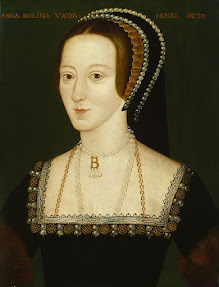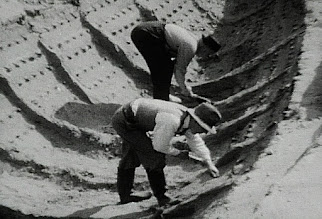Historians on tour - Beaulieu Abbey
This tour will be split into two separate blogs due to there being so much history to cover and both from two different time periods and don't want it to be confusing. For the third day of our holiday, I took Jordan to Beaulieu motor museum. On the site is the motor museum, the Abbey and the history house. This blog will concentrate on the Abbey first.
Our Visit
Obviously we did the motor museum first, but I won't go into to much detail about that as its not the content we want to cover and unless want me to talk about cars, I'll stay away from it. We then had a bit of lunch before walked over to a ruin that was part of the original Abbey, which was used as a mill by the monks. Even though its a ruin you can still see the the layout of were the walls were and were some things were carried out. We carried on walking round and ended up at the Abbey, the main cloister is now in ruins but the main square and the domus is still surviving, in the lower floor it contains a museum that talks about what life was like for the monks that lived there, while upstairs contains tapestries and is used for weddings.
Even though the cloister is a ruin, there is still the original ground layout which shows where the walls would have been. At the far back it shows where the alter would have once stood. All along the ruins there are little metal plaques that tell what would have been there and all the way round the Abbey is plaques that explain the history and show a proper layout of the Abbey. There are also the odd metal plaque that state if anyone was buried there.
Currently at the moment Beaulieu is having a sculpture show. All through the Abbey there are random sculptures, I must admit some of them aren't to my taste. Once walked around the cloisters we headed into the main square of the Abbey. Many of the door especially to the monks dormitories are blocked of along with the entrance to the kitchens. There is still an active church on the site, the doors were open but we didn't go inside for fear of burning. I'm know I'm not a religious person, but I am always blown away and in total amazement when I see the stain glass windows. I saw a quick glimpse of the ones in the church as was blown away.
We carried on walking around the square and went into the surviving Domus building. On the bottom floor it explains what the monks did when they lived there and what the life was like for them on a daily basis. Upstairs there is six tapestries that depicted the story of the Abbey, I found them fascinating especially when I saw the last one as it shows Henry VIII and the price the Abbey sold for. As soon as I walked up the stairs I was blown away with the wooden ceiling. Since I am a Tudor historian, wooden beamed ceilings have always been my downfall. So much so I think I can say we have picked our Wedding venue for when the time comes.
Once we had walked around the Abbey and read about its history I re walked around getting some pictures and putting my camera to the test trying to get some good artistic photos. As I have probably said before I love going round ruins as they allow my imagination to run wild. I try to picture what the place would have looked like before it was destroyed as well as where certain things were kept and carried out. Even though I have studied the history of the Tudors most of my life and want to make a career out of it, I honestly hate what Henry did to the Church's.
The History
The Abbey was founded in the early 13th century and once it was finished it was named Bellus Locus Regis, or the beautiful place of the King. This was due to the role King John had in the foundation of the Abbey. The first Abbot was Hugh, he stood high in the King's favour and was soon given the title of Bishop of Carlisle. King John showered the Abbey in money and land, so much so that when his son Henry took the throne, Beaulieu was the richest Cistercian Abbey. King John quarrelled with the Cistercian Order early during his reign and decided to establish an Abbey to atone for his past oppression's. King John decided to donate the land to the order after he had a unsettling nightmare where he was beaten up by a group of monks. But in return for his generosity he became the object of prayer in all the Cistercian monastery's. The monks from Beaulieu founded four more Abbeys, Netley, Hailes, Newenham and St Mary Graces.
The Church was built in the structure of a crucifix in the early gothic style with the influence of French churches. It took more then 4 century's to build and was finally dedicated in 1246 in the presence of King Henry III. Pope Innocent II had the Abbey named "Exempt", this meant that the Bishop only answered to the Pope. The Abbey became a sanctuary and due to its size many arrived. This even included Anne Neville, the wife of Richard Neville "The King Maker" and Perkin Warbeck, a pretender to Henry VII throne.
For three centuries, the Abbey was a place for Cistercian monks to stay when they visited from France and went to other parts of England. The village of Beaulieu flourished under the Order. This was due to their involvement in farming, wool production and producing items that were in high demand by merchants all over Europe. The monks were also skilled herbalists and tended to medicinal gardens that were and still is within the Abbey's grounds.
The Abbey grew in strength as a religious centre until the 16th century. Due to mass income that the Abbey had, Henry VIII started the dissolution of the monasteries here. The Abbey and the surrounding estate were sold to the Earl of Southampton in 1538 for the sum of £1,340. The monks were given pensions and the Abbot Thomas Stevens a pension of 100 marks a year. There was much fighting around the court as to who wanted to gain ownership. Thomas Wriothesley, 1st Earl of Southampton got the land and Henry gave him the Abbey along with the 3,441 hectares of land that surrounded it. He built a house on the site (more on that later). He had the church demolished beyond recognition as were the Government's orders. The Abbey Church, Cloister and Chapter House were demolished, but the Refectory, Domus and two Gatehouses were left on the understanding they were converted to secular use.










Comments
Post a Comment